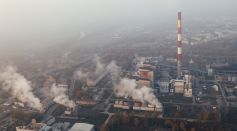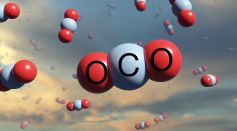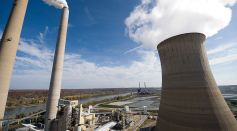Tags: Carbon dioxide

Blue Carbon Habitats May Not Remove Carbon Dioxide in the Atmosphere

Fire Detection Sensors: Italy's Bet to Combat Forest Fires Amidst Climate Change

Climate Change Reversal Possible? MIT Scientists Say They Can Stop This Threat to Earth

Supreme Court Restricts EPA Power to Reduce Carbon Emissions

Carbon Footprint Measurement Through AI: Scientists Develop New Tool to Track, Calculate CO2 Emissions and Reductions

Novel Way of Growing Plants in the Dark Uses Artificial Photosynthesis to Make Food Production More Efficient

Mars Web-Like Patterns and Blue Fan-Shaped Marks Seen on Surface, What Are They?

New Sorbent for Fastest Recyclable Carbon Capture System Reaches 99% Efficacy

Can We Live in Venus? Yes, But Only If We Encase It in Giant Shell

Scientists Working on Converting Astronaut Urine Into Rocket Fuel Using Sunlight

Steaks Out of Thin Air: Start-up Company Makes Protein From Carbon Dioxide, Organism, and Water

Novel Catalyst Can Turn Carbon Dioxide Into Gasoline 1,000 Times More Efficiently Than Existing Methods

Methane Levels in Atmosphere Cite Global Warming as Possible Cause of Its ‘Dangerously Fast’ Growth

Carbon Capture Storage Powered By Hydrogen Extracts 99% CO2 At a Rate of 2 Liters Of Air Per Minute

Mosquitoes Use Color to Find Hosts Resulting in Diseases Including Dengue Fever

Methane Coming from Our Gas Stove Contributes to Global Warming, Scientists Tell Us How It Happens

Climate Change Could Be Delayed? Mechanical Trees Could Absorb Carbon Dioxide Tell Us How

Carbon Dioxide May Be Converted to Solid, Helping with Industry Decarbonization

Cat Litter Material Can Save the Planet, Combat Climate Change With Its Methane Content

Elon Musk Wants SpaceX To Use Carbon Dioxide As Rocket Fuel
Most Popular

Largest Known Volcanic Aquifer Discovered Beneath Oregon's Cascades

New 'Supergiant' Sea Bug Found in South China Sea, Named After Darth Vader

Mediterranean Sea Was Refilled by a Catastrophic Flood Millions of Years Ago

Mysterious Cosmic Waves That Sound Like Birds Detected in Unexpected Space Region





